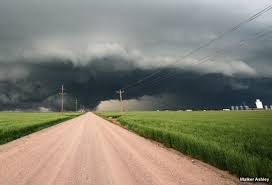Beyond the control of loyalty
 31 May 2017
31 May 2017
The best loyalty work sometimes evaporates in the blink of an eye if something goes wrong beyond the boundaries of the loyalty program as such. But is this really just fate or can (and should) businesses prepare for such situations?
While most loyalty programs cannot yet be complacent about themselves since too many issues remain unsolved, program managers usually understand what needs to be done at that level and work hard to get things right. Well, let’s rather say to an acceptable level. Without even suggesting that everything is fine within this nice world of loyalty (what would all my other blogs be about in that case??), I am looking beyond these boundaries today.
Decidedly, the airline business is a rather complex system, subject to various internal and external factors. This leads automatically to silo thinking within the different services. A fuel hedging manager has limited understanding of typical Ops issues, while a flight dispatch manager couldn’t care less about loyalty programs. And every time, different services are nevertheless forced to work together to resolve a specific issue, mutual ignorance of each other’s views leads to the well-known internal conflicts. Think of loyalty and revenue management.
Managers got perfectly used to that situation and have learned how to adjust to it – in normal times. But things get completely out of control when anything goes wrong.
Just in the last couple of weeks, we had different airlines suffering from (possible) laptop bans, IT breakdowns, strikes, imminent bankruptcies or overbooking issues. All this happened very far away from loyalty departments, but they all had one common result: Loyalty was/is at stake. If people destroy their co-branded credit card because of an overbooking issue, this is clearly no longer an issue to be dealt with by revenue management.
By the way, it is also interesting to note that airlines tend to suffer less from a negative loyalty impact from the worst imaginable scenario – a crash – than from many of these misfortunes, which are difficult to avoid (unless it obviously takes dramatic dimensions like for Malaysia Airlines). This even remains true if there are good reasons to question the airline’s responsibility for a crash, what is still the case with most accidents (yes, except for poor Malaysia Airlines…) This is also partially the result of the role of social media with its power to make comparably small things big. Test yourself: What is still more present in your mind: United damaging a guitar back in 2008 or a Lufthansa/Germanwings pilot committing suicide with a full plane in 2015? [And if you feel like me when writing this and wish to listen to this nice song again, here it is! We all don’t get younger…]
Any such event creates anything between curiosity and true need for reliable information for customers. And that is where the loyalty/CRM department comes into play since it is primarily through their program membership that customers expect airlines to communicate with them. But sending out a standard e-mail with a double miles promotion for a car rental partner the next day after such event risks just adding insult to injury.
Airlines – and by extension any other business – need to understand that loyalty is not only built through recognition and rewards, but also through building confidence and creating a reputation of reliability. Most customers would understand that things can go wrong, but rather than leaving speculation to tabloids that IT breakdowns are a direct result of cost cutting (suggesting to the public that it can happen any time again!) or preparing secretly fall-back plans for laptop bans without talking about them in advance (I’ve booked an upcoming trip to the US through Canada as the uncertainty was just too big to me and I didn’t want to rely on my airline potentially resolving this somehow if it occurs!), proactive communication with all customers is desirable.
Keeping the control over all communication can be considered a corporate task, but it yields, by experience, much better results if managed by the department, which claims to own the customer relationship – the loyalty department. It is also here where changes in customer behaviour become first visible. While most airlines have contingency communication plans in place for directly affected passengers, major events require a far wider – proactive – communication to the loyalty database. Even a customer not holding a reservation for two days of a strike needs to be reassured as he might just be about to book his next trip – and is hence at obvious risk to look for alternatives.
And the standard argument against such communication strategy – that many customers might even not be aware of the problem and shouldn’t be made aware of it through the airline itself – doesn’t hold true nowadays anymore either. It is usually only a question of hours until it becomes obvious whether a topic has the potential to become socially viral or not. This is certainly not the case with each customer complaint. But you should be ready that one out of X interaction with an unhappy customer has that potential, not necessarily by the nature of the issue, but sometimes simply because the customer in question understands how to gain public awareness for his case. And if this happens – or any external event, which comes usually nevertheless with some advance notice -, you should be ready to act, not only react. And do so quickly.







